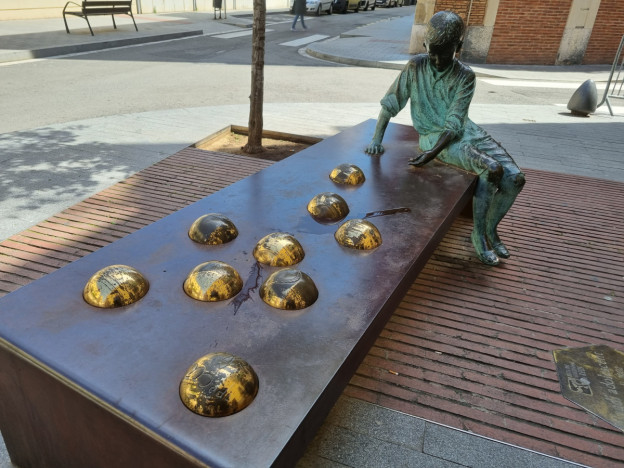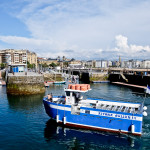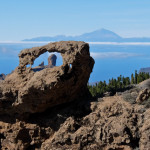Let Tim Cooper give you his insider guide to Reus, the birthplace of Antoni Gaudi after a glass of vermut of course.
We’ve all heard those horror stories about RyanAir. How you buy a ticket to Denmark and end up in Sweden. How you fly to Venice and find that canal’s in Treviso. Then there are the people heading for Barcelona who end up in Girona or Reus: both more than 100km away from their destination.
It’s understandable: if you go to the “Flights to Barcelona” page on the RyanAir website you’ll find the Reus and Girona routes listed alongside Barcelona’s official airport El Prat. When the ticket can be as cheap as mine (£9.99 with a cabin bag) it’s easy to imagine people clicking through and paying without checking to see how far away the airport will be.
Consequently, thousands of fliers find out only when they land in Spain. Most of the ones on my flight from Leeds-Bradford to Reus were heading on to Barcelona blissfully unaware they were still two hours away by bus and train – almost as long as the flight they just stepped off.
So it was no surprise to find there was no one else joining me for the short cab ride to Reus town centre, just three miles, five minutes, and a cheeky €20 fare from the airport. But what you lose in rip-off pricing you gain in valuable drinking time. And there’s only one thing to drink in Reus – the home of vermouth. Or vermut as they call it in Spain.
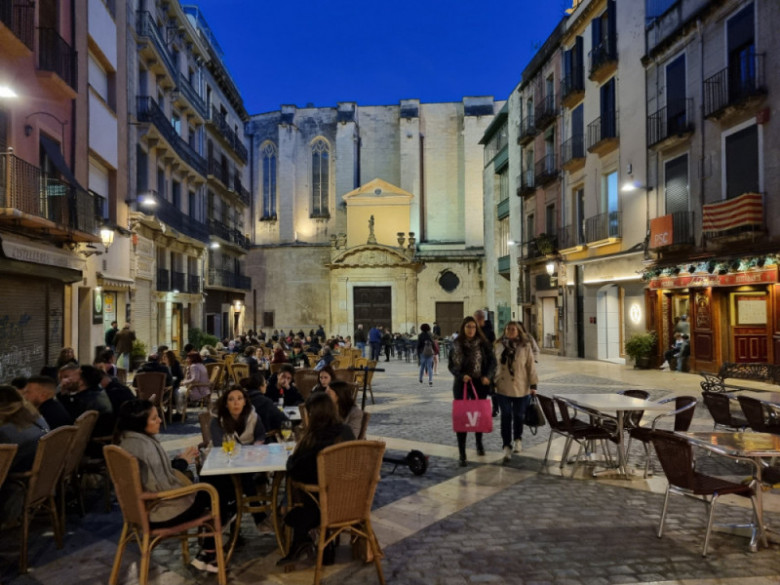
There’s something especially joyful about stepping off a plane and sitting at an outdoor table in a bustling town square 20 minutes later, with a cool drink in your hand, smiling smugly at the thought of your fellow passengers – especially the noisy mask-resistant trio who made your flight hell – grumbling as they wait for a train that will take them another hour and a half to get to their destination. They might even have sobered up by then.
So, what is Reus like?
Well, for a start it’s pleasantly and refreshingly tourist-free because all the foreigner tourists except me have buggered off to Barcelona or Tarragona. And it’s much cheaper than it’s more famous and touristy neighbour up the coast, with an easily walkable old town centre.
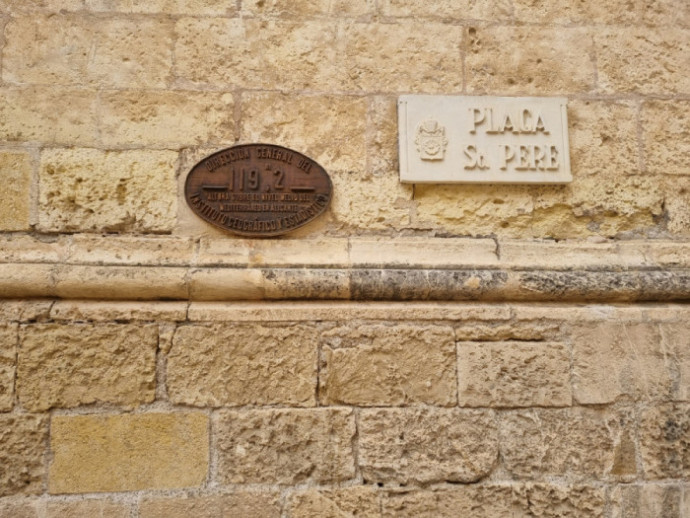
For my guide to Reus, it’s best to get your bearings from the austere mediaeval Priory of St Peter (Sant Pere) in the heart of the old town, built in the 16th century in the Renaissance style and supposedly containing the relic of St Peter the Apostle. The tower offers spectacular views over the town in return for the steep climb, and its Gothic belfry is illuminated at night.
The Home of Vermut
My fellow passengers are still on the train to Barcelona when I go for a pre-dinner wander around the town – an orientation expedition that involves the first of many glasses of vermut. While the Spanish didn’t actually invent the stuff (a fortified wine flavoured with herbs and spices that emerged in Germany in the 16th century and first found favour in Turin 200 years later) they started making it in Reus in the 19th century and haven’t looked back – or lost the taste for it – yet.
The ritual of the “vermuteo” is observed rigorously and regularly, traditionally at noon as a pre-lunch aperitif, and again at sundown as a pre-dinner aperitif. And, based on my own evidence of the busy terraces outside nearly every drinking establishment, most of the hours in between. And, for that matter, after.
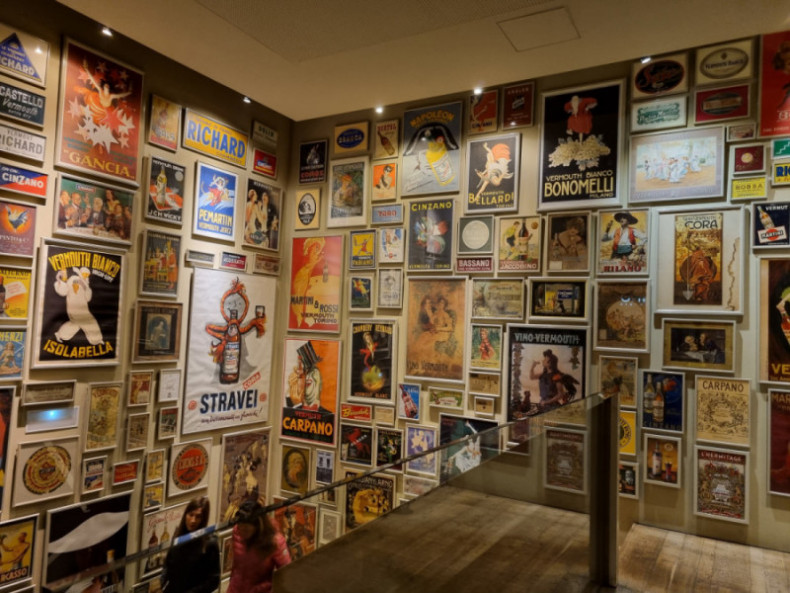
It’s always red/rojo (none of your Cinzano Bianco here) and generally served with a giant ice cube and a slice of orange or, sometimes, a green olive. And, being generally served in big tumblers and coming in at about 15 per cent ABV, overindulgence may understandably involve a break for a siesta. Which, for all I know, is why they invented siestas in the first place.
A century ago there were more than 30 vermouth producers in Reus and today their wares are on display for posterity at the Vermouth Museum containing thousands of bottles, labels and posters, with a bar and separate dining rooms dedicated to the town’s three biggest producers today – Miró, Ysaguirre and Iris – and another for perhaps the world’s most famous vermouth, the Italian brand Martini; not to be confused with the gin or vodka-based cocktail of the same name – though I can’t help feeling the green olive you occasionally get in your vermouth has crept in from a confused mixologist.
The museum’s restaurant serves excellent Catalan cuisine so you can soak up your vermut with croquetas and seafood before waddling off into the cobbled streets in search of a nightcap at one of the many late bars. And when you tire of typically Spanish bars and tapas, there’s always The Green Dog, a cosy little spot filled with bric-a-brac including many of the titular dogs picked up in antique shops, with the kind of laid-back vibe you could find anywhere from Brooklyn to Berlin and Bethnal Green.
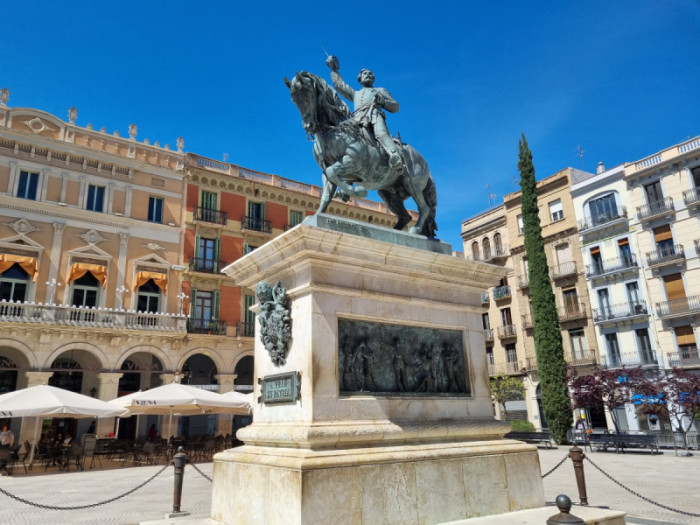
At the epicentre of the old town is the main square, Plaça del Mercadal, and in any guide to reus, the best place to get your bearings and explore the rest of Reus. Surrounded on all sides by the outdoor terraces of restaurants, it is here that you’ll find the Town Hall, with its Renaissance facade, and the contrastingly modern Tourist Information office. It is also here that you can begin the town’s must-do activity – the Catalan Modernism Route.
Reus is the birthplace of Catalunya’s most famous architect, Antoni Gaudí – a name synonymous with Barcelona’s Sagrada Familia cathedral – and, as the town’s most celebrated son, you’ll find the contrastingly contemporary Gaudí Centre on the main square. Opened in 2007, it tells you everything you’ll ever need to know about him, along with documents, plans and multi-media displays of most, if not all, of his buildings. You’ll also find the house where Gaudí grew up around the corner: you can even admire a small statue of him when he was a boy in the street outside. But you won’t find any buildings he designed – because he didn’t build any in his hometown.
Catalan Modernism
However, in this guide to Reus you will find nearly 30 other spectacular examples of the Catalan Modernism style: a regional version of Art Nouveau that is, confusingly, almost the antithesis of the clean lines and functionalism of actual Modernist architecture. Here, instead of minimalist edifices made of concrete and steel, we have monumental buildings with voluptuous curves, classical influences and elaborate floral decoration. Never more so than in the first – and grandest – building on your walking tour, right on the corner of the square.
You’ll probably catch your first glimpse of the spectacular Casa Navas from a sunny seat outside one of the restaurants opposite (with a glass of vermut in hand, obviously). It’s hard to miss, even without the top half of its chimney-like stone and glass tower, its stepped crown and stained-glass horseshoe arches on the roof terrace. All of them were destroyed by a bomb during the Spanish Civil War – information that, once given to me, keeps the Clash song Spanish Bombs rattling around my brain as I explore its extravagant interior.
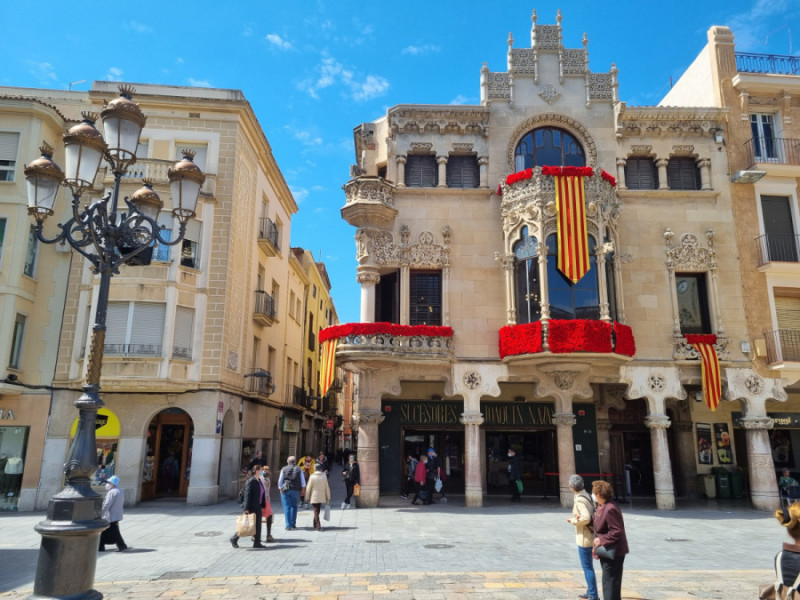

Built at the turn of the 20th century, when the town square was called the Plaça de la Constitució, Casa Navàs was designed by Lluís Domènech i Muntaner for a wealthy cloth merchant, Joaquim Navàs Padró (hence the name). Today, despite the missing tower, it claims to be the only art nouveau building in Europe retaining its original interior.
Perfectly preserved, and including a spectacular indoor patio/atrium, with natural light from above, it retains the original furniture, ceramic tiling, mosaic floors and damask silk wall coverings, and can be explored, for a small fee, on an organised tour – or take the on their website.
The rest of the Modernist Route is best explored on a leisurely walk aided only by a bi-lingual pamphlet from the Tourist Office (€3). As well as taking in all 30 buildings, it’s the perfect way guide to Reus and while orienting yourself with its geography.
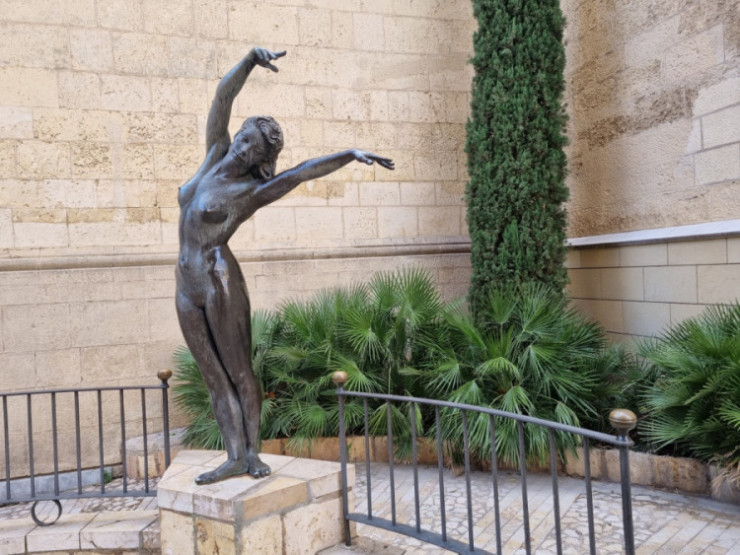
The suggested route takes in most of the old town, including the main shopping street that runs between Mercandal and the other big square, Plaça de Prim. If you wish to explore further, there is a wide tree-lined boulevard running all the way from the railway station southwards, taking in two of the bigger buildings en route – the imposing Oenological station, established in 1905 with a walled garden and pillars decorated with the rose emblem of Reus – and the old Slaughterhouse, one of the last examples of the town’s 19th century industrial architecture.
Where to eat in Reus
When it comes to eating out in Reus, the visitor is spoiled for choice. And that’s just in the old town centre, an area small enough to be crossed on foot in ten minutes. There’s even a Michelin-starred restaurant, Ferran Cerro, on the pretty Plaça Castell, offering a variety of set-price menus including a €30 lunch deal. It’s flanked by a Michelin wannabe, Koop Too, where the minimalist style overload includes ‘seats’ consisting of a cushion on top of a concrete block. Alternatively, enjoy a more informal experience with a traditional tapas-style meal, or just a few drinks at the bar, at the Cafè de Reus.
Keep walking – fortified, no doubt, by another vermut – and you’ll reach the railway station a 10-minute walk from the centre of town (or head to the bus station 10 minutes in the opposite direction) where trains will take you to the seaside in less time than it takes to pack your swimsuit and towel. In 15 more minutes you can be in Tarragona, “an open-air museum of Roman antiquity” (as Andy Mossack described it here in 2018) with its own amphitheatre and circus (the Roman kind, not the lion-tamers-and-acrobats kind), a cathedral, museums and an excellent Museum of Modern Art that displays the work of local artists alongside a tapestry by the Barcelona-born Joan Miró.
Or head west and you’re close to Cambrils, with its long strips of sandy beach overlooked by equally long strips of seafood restaurants where you can gorge on the local red prawns, cuttlefish and all other kinds of crustacean and fish. And, if you’re with the kids, head for Salou and the PortAventura World water park.
Back in Reus, once you’ve explored the Modernist buildings and gone up the tower of the priory, you can devote your time to eating and drinking. And you’ll know there’s only one drink to order. Siempre vermut! That’s my personal guide to Reus, but you might have a different view. Why not let us know.
All images (C) Tim Cooper
Tell me more about this insider guide to Reus
You can fly direct to Reus on British Airways, Ryanair, Jet2 and TUI from nearly all UK airports including London, Aberdeen, Belfast, Birmingham, Bristol, Cardiff, Doncaster, Nottingham, Edinburgh, Glasgow, Leeds, Liverpool, Manchester and Newcastle.
Further information about this insider guide to Reus and surrounding area at:
Catalan Tourist Board Reus Tourist Office
Hotels in the centre of Reus from around £65 per night for a double room at Hotel Gaudi or Hostal Urki-Oklahoma for £50.

